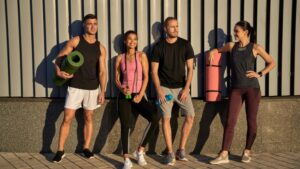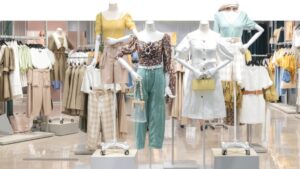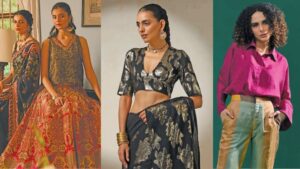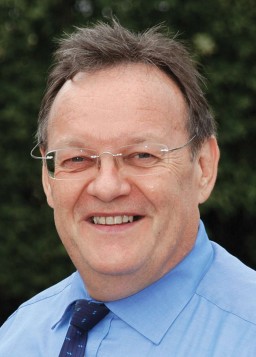
Imagine an aircraft with a price tag 15% lower but fuel consumption 50% higher than its newer competitors. You are right; no airline would buy it any more. But in an equivalent situation, many textile industrialists still stick with the old technology.
Kurt Müller, CText ATI, Area Sales Director, THEN Maschinen GmbH, talks about his newly launched cost-effective product THEN-Airflow dyeing machines suitable for both woven and knits. In some markets, the machines have been sold predominantly to knit fabric dyers (as in India, to date), while in other markets, such as Turkey, almost all machines are running on woven fabrics.
Poor accounting prowess and cost awareness still leads to investment in superficially cheap dyeing equipment that will preclude massive cost-savings. Smart dyers everywhere, of course, have already discovered that either Governmental pressure over pollution or increasing consumer demand for ethically and environmentally sound garments has, in fact, essentially forced them to dramatically lower operating costs via state-of-the-art dyeing machinery.
As more and more textile processors learnt that economy and ecology are inseparable, the THEN-AIRFLOW dyeing machine, invented some 30 years ago by an inventive and resourceful German engineer Wilhelm Christ, became even more relevant.
The Simple Idea
[bleft]THEN Maschinen GmbH, the machinery company behind the THEN-AIRFLOW range of dyeing machines, has been able to achieve greater economies of scale as sales worldwide have taken off leading to price competition[/bleft]
As is the case with almost every ingenious invention, the principle is breathtakingly simple. In traditional hydraulic dyeing machines (euphemistically called “softflow” in many markets), copious amounts of dye liquor are used for transporting the fabric instead of dyeing it. It means that large quantities of liquid are heated and pumped around endlessly, without any measurable result in the dyed fabric.
The machines with “airflow” technology uses liquor only for the actual core process: dyeing. To transport the fabric through the machine, air is used.

Dyeing takes place only in the nozzle, through which fabric is moved by an air stream. This is met by liquor injected by spray jets, and the combination of the air stream and liquor immediately forms an aerosol mist that penetrates the fabric rope both uniformly and deeply. After the nozzle, the fabric automatically balloons – thus avoiding crease marks and streakiness – before being plated onto a PTFE-rack. All excess liquor immediately drips into the filter sump beneath the vessel and is re-circulated through the heat exchanger up to the nozzle.
As a result, the actual liquor ratio used by THEN-AIRFLOW for cotton dyeing is between 1:3.5 and 1:4 (this includes the amount of liquor used to compensate for fabric pick-up).
Typically, a medium shade of cotton single-jersey will require only 30 to 35 litres of water per kg of fabric, including pre-bleaching, dyeing and washing-off. This is half the amount even the most modern hydraulic machine will use. This is not only the result of the much lower liquor ratio, but also of the ability to rinse fabric with an open drain – an exclusive feature of THEN-AIRFLOW machines. For polyester, the liquor ratio in these machines goes down to 1:2.
Better Economy
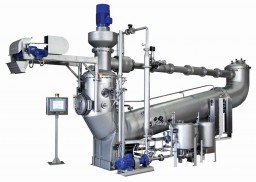
The drastic reduction in liquor ratio as well as in overall water consumption obviously has a direct bearing on water and effluent costs.
There is, of course, also less fluid to heat. Typically, steam consumption of THEN-AIRFLOW machines per kg of dyed fabric is 25% to 40% lower than on now almost obsolete hydraulic machines. Conversely, replacing hydraulic dyeing machines with THEN-AIRFLOW machines will allow an increase in daily production of between 30% and 50%, using the existing boiler capacity. Moreover, the practical heating gradient is 9oC/min, allowing for shorter heating-up times. And the open-drain rinse facility further cuts down washing-off time.
Third, the consumption of chemicals drops by around 40% to 60%, notably when it comes to Glauber’s salt in reactive dyeing. Here, the reduction in consumption is disproportionately high, as lower liquor ratios require less salt per kg added. So, the lower amount of liquor in absolute terms also allows for a lower concentration (for example 40 g/l instead of 60 g/l) and compounds the savings potential.
Lastly, the specific electrical power requirement of Airflow dyeing machines (i.e. kWh per kg of fabric processed) is the lowest among all exhaust dyeing machines.
The combination of lower liquor ratio, steeper heating gradient and faster rinsing allows cycle times to be 25 to 35% shorter. The typical cycle time for a dark red, 100% cotton single-jersey, comes down to 4.5 hours, including loading, pre-bleaching, dyeing, washing-off and unloading.
In typical Indian operating conditions, the practical savings achieved by dye houses with reactive dyeing are in the region of Rs. 9 to Rs.10 per kg of fabric (equivalent to around US $ 0.04 to $ 0.05).
However, the increased productivity through the Airflow technology by 25 to 35% means that the number of chambers required to achieve a given production target is less than with traditional hydraulic machines, thereby neutralizing any price difference from the outset.
Quality Aspects

Air is a much gentle medium than water, and indeed THEN-AIRFLOW machines dye fabrics more gently. This is particularly visible when it comes to surface hairiness of cotton goods. In addition, dyeing uniformity is exceptionally high, thanks to the fact that dyeing takes place only in the nozzle and the fabric is ballooned automatically upon exiting the nozzle. On hydraulic machines, the dye bath (and the uncontrollable order in which the fabric comes to lie in it) is the source of many dye problems.
Since the fabric is then plated onto a PTFE-cradle that allows all excess liquor to run off back into circulation, there is no weight of the otherwise present dye batch pressing onto the fabric in the bottom of the machine.
In addition, PTFE in the entire lower section of the vessel and the dyeing nozzle leads to extremely low co-efficient of friction and prevents any friction marks.
The THEN-AIRFLOW concept, with its absence of any dye bath, makes even the round vessel machine extremely suitable for fabrics that are sensitive to either crease marks on hydraulic machines or tension – or both. In fact, THEN-AIRFLOW SYNERGY round-vessel machines can be used for fabrics with an elasthane content of up to 20%. Beyond that, the THEN-AIRFLOW LOTUS long-tube machine is being used for fabrics with elasthane contents of up to 45%.
In other words, a standard THEN-AIRFLOW round-vessel machine can handle fabrics that need hydraulic long-tube machines. The THEN-AIRFLOW LOTUS machine will successfully dye many fabrics that until now were processed on beam dyeing equipment.
Ecology
Be it public pressure or Government regulations: environmental standards are becoming tougher year-by-year. Apart from carbon emissions, a new hot topic among aware consumers of apparel is “water footprint”. People around the world are increasingly realizing how much water is being channelled into, for instance, cotton growing and dyeing. The textile industry competes against other agricultural sectors, such as food production, for water. A quick search of the internet will reveal a plethora of organizations that raise awareness among consumers as well as fashion labels of how much water is still being wasted in the course of producing an item of clothing.
Sadly, there are still dye houses operating in many parts of the world that use 150 litres of water per kg of fabric they dye. But with Airflow technology only one-fourth of this is truly needed to achieve a perfect dyeing result conforming to the highest quality standards. And with its far lower per kg dyeing costs, THEN-AIRFLOW technology also proves that ecological dyeing makes more economic sense, too.

